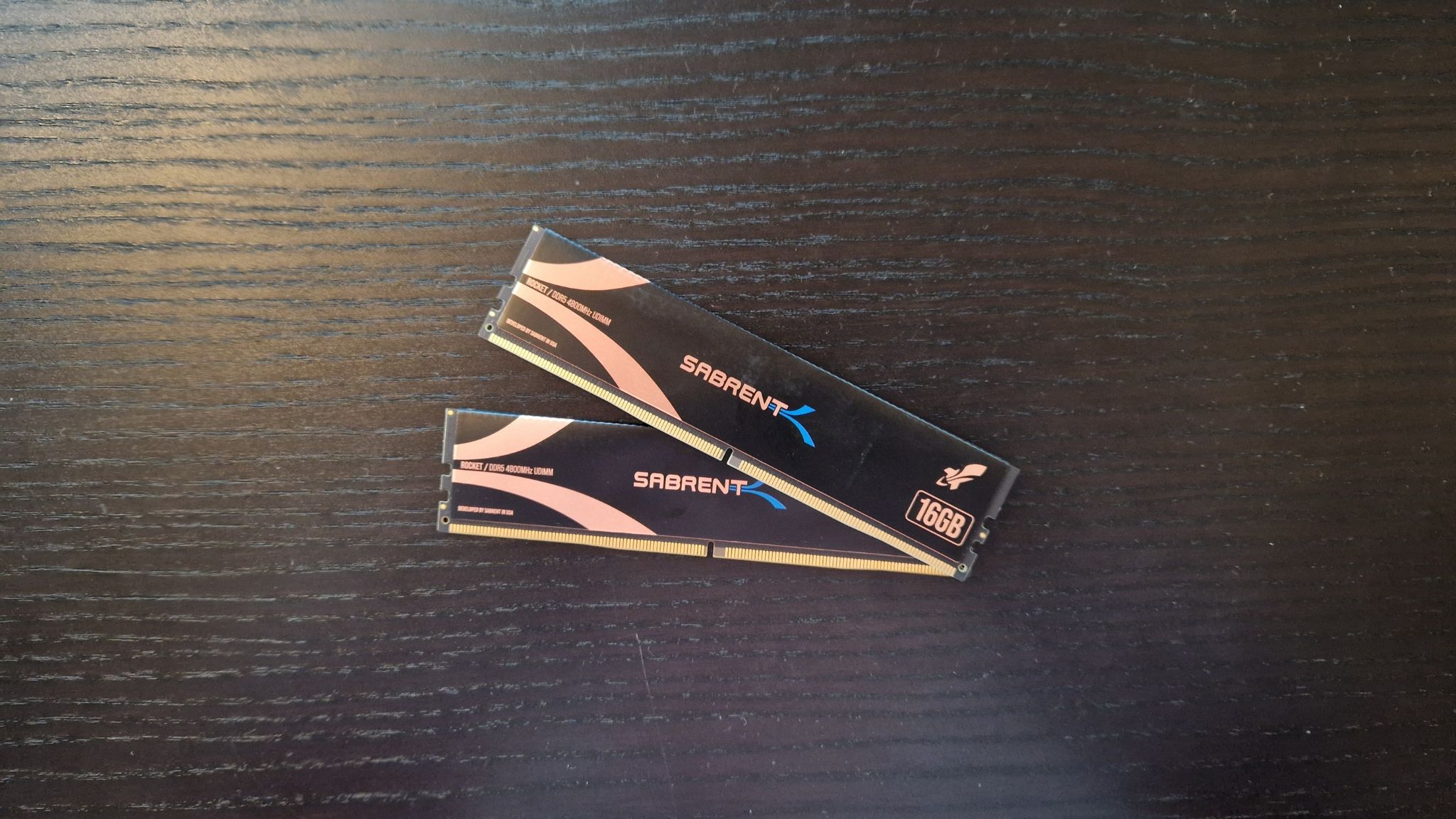GamesRadar+ Verdict
The Sabrent Rocket DDR5 is a brilliant RAM module with intuitive yet minimalistic design elements and excellent overclocking capabilities. Although its tiny width had me on edge during installation, it's priced competitively to stand up to the top DDR5 sticks on the market.
Pros
- +
Great clock speeds
- +
XMP noticeably boosts performance
- +
Competitively priced
- +
Minimalist design
Cons
- -
So thin it feels a bit fragile
- -
Minimalist design (again)
Why you can trust GamesRadar+
As DDR5 continues to creep its way into more and more of the best gaming PCs, it's refreshing to see products like Sabrent's Rocket DDR5 hitting the shelves. Sabrent, known best for its storage products, has continued its streak of quality with Rocket DDR5 RAM modules that come in 16GB and 32GB models. With a quoted clock speed of 4800MHz, it doesn't quite have the ridiculous speeds of the absolute best RAM for gaming. The Corsair Dominator Platinum has 6000MHz out of the box, for example. But the Rocket DDR5 does match up well with Corsair's Vengeance DDR5, and is competitively priced to do so.
At $179.99 / £145 (for 16GB), it's still fairly pricey next to DDR4 options. Is the extra efficiency of this new generation worth the money in Sabrent's latest bit of rocket science?
Design and Features
As you'll see from the images below, Sabrent's Rocket DDR5 RAM sticks are tiny. I don't want to body shame other DDR5 modules, but these may well be the thinnest high-performance RAM sticks I've ever seen, especially when you look at the flashy DDR5 options on our best RAM list. There aren't loud RGB lights to shout about here or even an outspoken passive heatsink. In that case, this is a perfect choice if you're looking for minimalism.
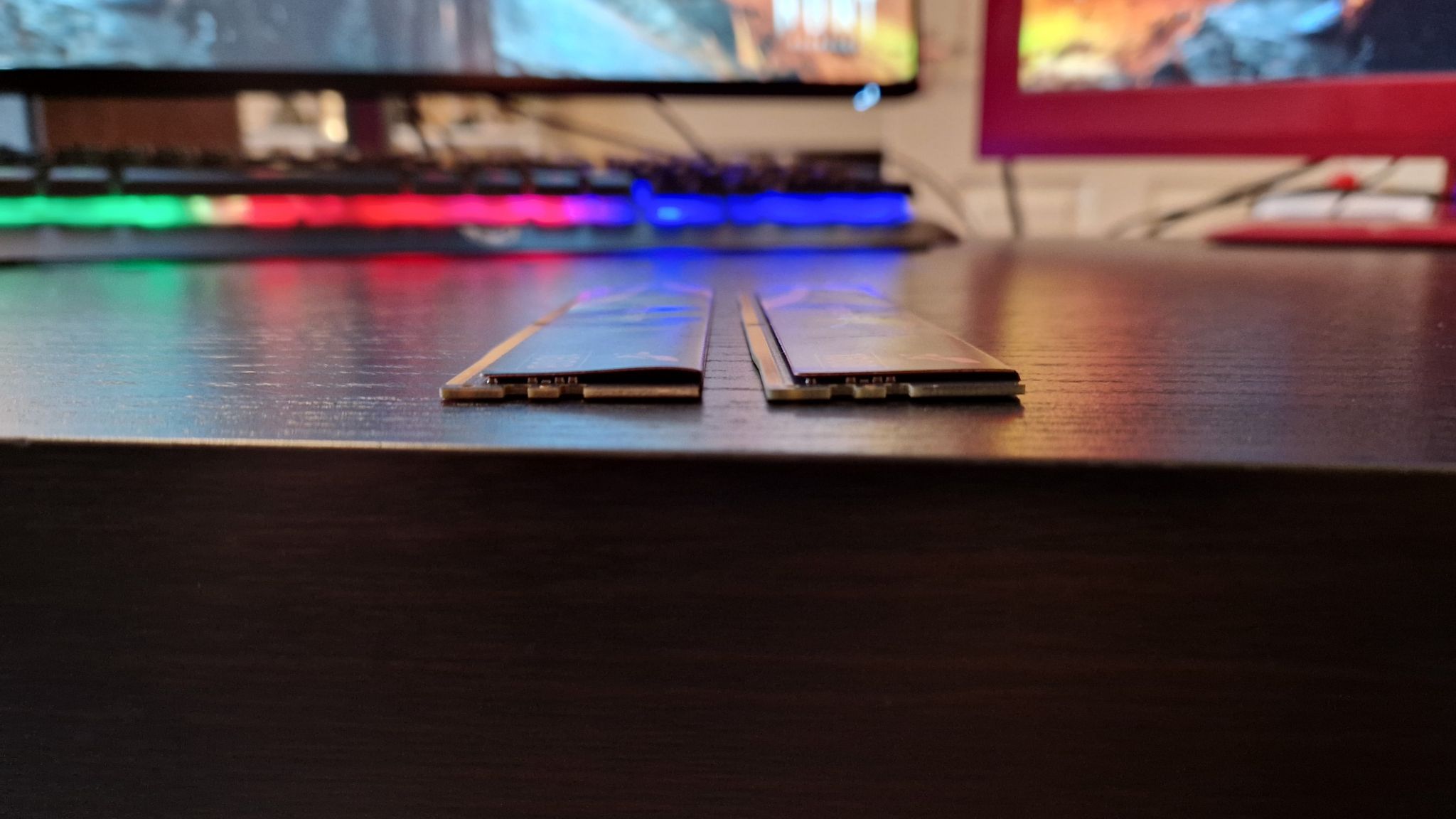
Honestly, it's hard to nail down whether this very slight design is a pro or a con. Tiny as it is, there is an absolutely ingenious copper heat spreader on the outside of the stick that keeps the circuitry nice and cool. On the other hand, I couldn't help but feel there was some fragility when I was installing it into our testing rig, especially given the price. It feels like holding an elongated ritz cracker that would be all too easily snapped in twain if you apply pressure at the wrong angle. Regardless, this type of design work in such a powerful memory kit should be applauded.
In terms of features, Sabrent has designed these modules with overclocking in mind, which, for DDR5, is saying something. Although the marketed speed is 4800MHz, Sabrent says these sticks are supposedly capable of up to four times the module capacity with DRAM. So it's very possible to get upwards of 5000MHz, should you need it. We'll talk more about performance in a second, but these overclocking speeds are said to be possible thanks to some clever architecture. Sabrent says it split the normal 64-bit channel found in most DDR5 modules into two independent 32-bit channels.
Finally, if you're looking for a memory upgrade for one of the best gaming laptops, the Sabrent Rocket DDR5 comes in smaller form factors too, so you can slot a module into one of those as well.
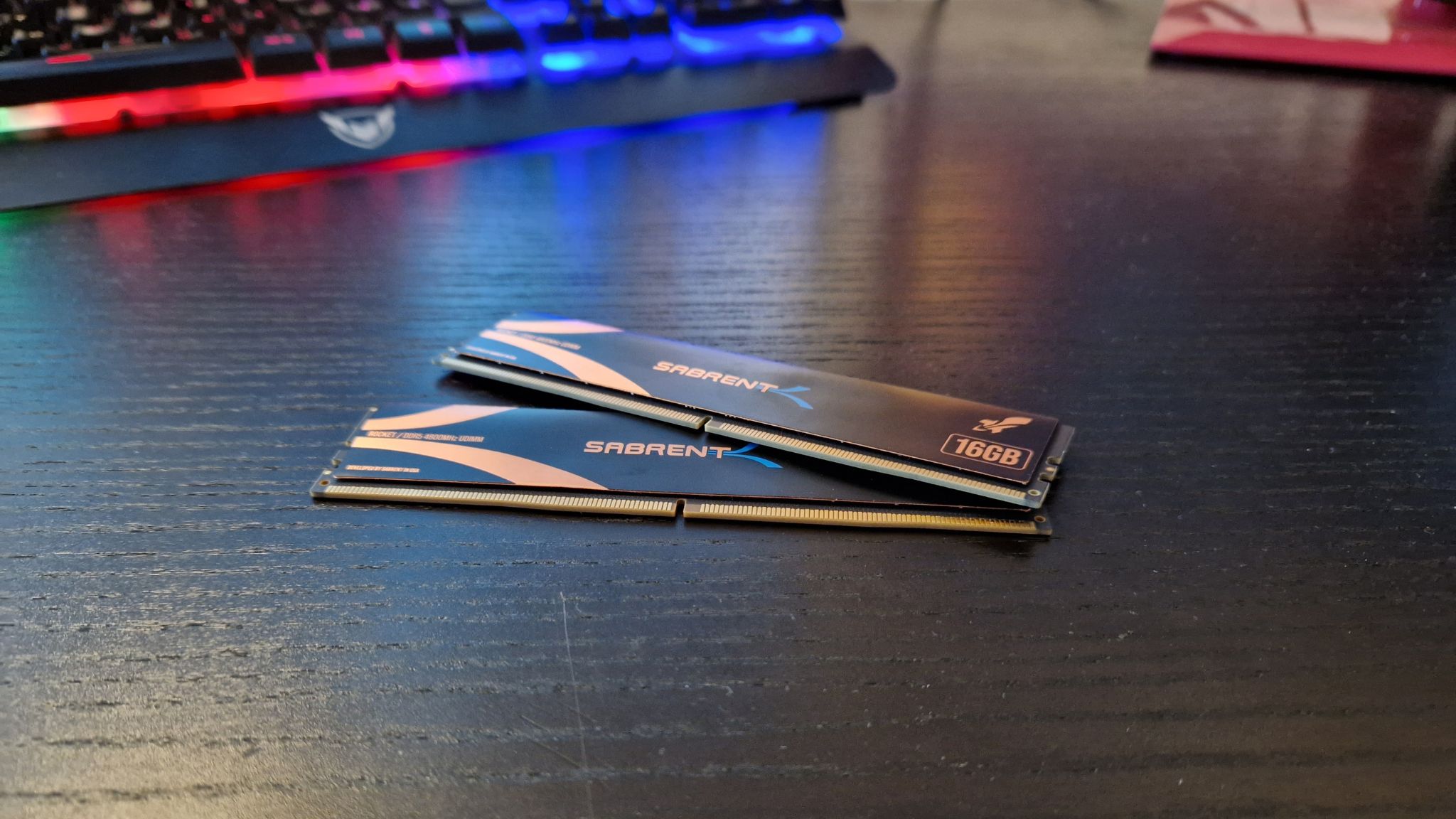
Performance
If you aren't familiar with RAM upgrades, allow me to explain. Even though you might buy certain RAM sticks because of the speeds they quote on the box, when you first install them they will almost always run at much lower speeds. In order to access the fast paces you pay for, you need to head into your BIOS and have a quick footer about with your settings. Luckily, XMP profiles, or Xtreme Memory Profiles, help you to access more performance without manually overclocking every setting, and that's exactly what I did with Sabrent's Rocket DDR5 to put it through its paces.
Out of the box, our testing rig was running the RAM at about 4200MHz, which, for a lot of people, is still extremely quick. We were very impressed with PNY's XLR8 Gaming DDR4, for example, and its speeds are quoted around the 3600MHz mark.
For reference, our testing rig has a 12th Gen Intel Core i7-12700K CPU. After plenty of use at this DRAM rate, I played around with some XMP profiles to give the RAM a push. After doing so, I got the quoted speed of 4800MHz, and later on, even pushed it to 5000MHz. That's about as brave as I got, but considering that Sabrent says the modules are capable of four times the module capacity, I'd be willing to bet that the Rocket DDR5 sticks are highly futureproofed.
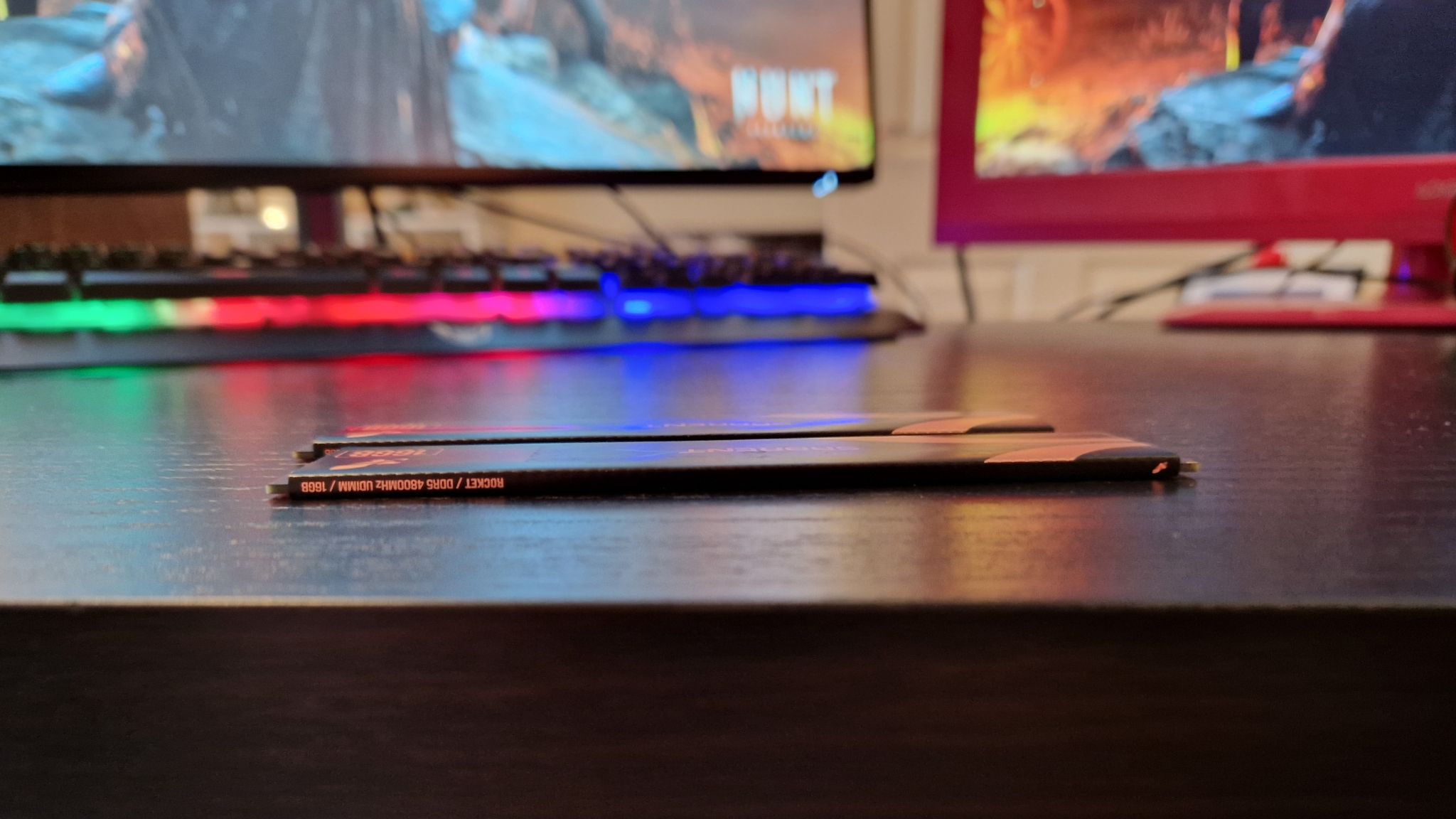
After enabling XMP, I found that there was a noticeable difference in load times in the three games I used for testing. Our testing rig's PNY SSD, which is up there with the best SSDs for gaming, is great at the best of times, but the RAM boost definitely felt as though it made its life easier.
There are plenty of folks that will still tell you RAM won't have a bearing on frame rates - it certainly isn't the go-to benchmarking method for memory. On the other hand, I think that can be a real tell for memory that's going to take strain off your other components. After some testing, it was clear to me that this RAM's overclocking capabilities will do just that.
As you can see from the table below, I played three games with varying technical demands at both 1080p and 1440p, with medium settings, and logged some fps rates. I then enabled XMP in the BIOS and played them again to see if there was any change. I thought this would be a decent way to test the Rocket DDR5 because even with an RTX 3050 GPU that isn't the beefiest, I wanted to see if the XMP clock speeds would make its life a little easier.
You can see the results in the table below.
| Row 0 - Cell 0 | 1080p | 1080p XMP Enabled | 1440p | 1440p XMP Enabled |
| Hunt: Showdown | 100 fps | 110 fps | 85 fps | 90 fps |
| Apex Legends | 130 fps | 144 fps | 90 fps | 124 fps |
| Metro Exodus | 135 fps | 151 fps | 60 fps | 100 fps |
I was very pleasantly surprised by the results of this test. As you can see, the fine-tuned speeds gave these games a considerable boost in performance, particularly when the RTX 3050 was trying to run games at 1440p. From this test alone, I can definitely recommend the Rocket DDR5 modules. They're perfect for anyone who wants to squeeze every last drop of power out of their PC components without overclocking everything and screaming "I'm giving her all she's got, captain!"
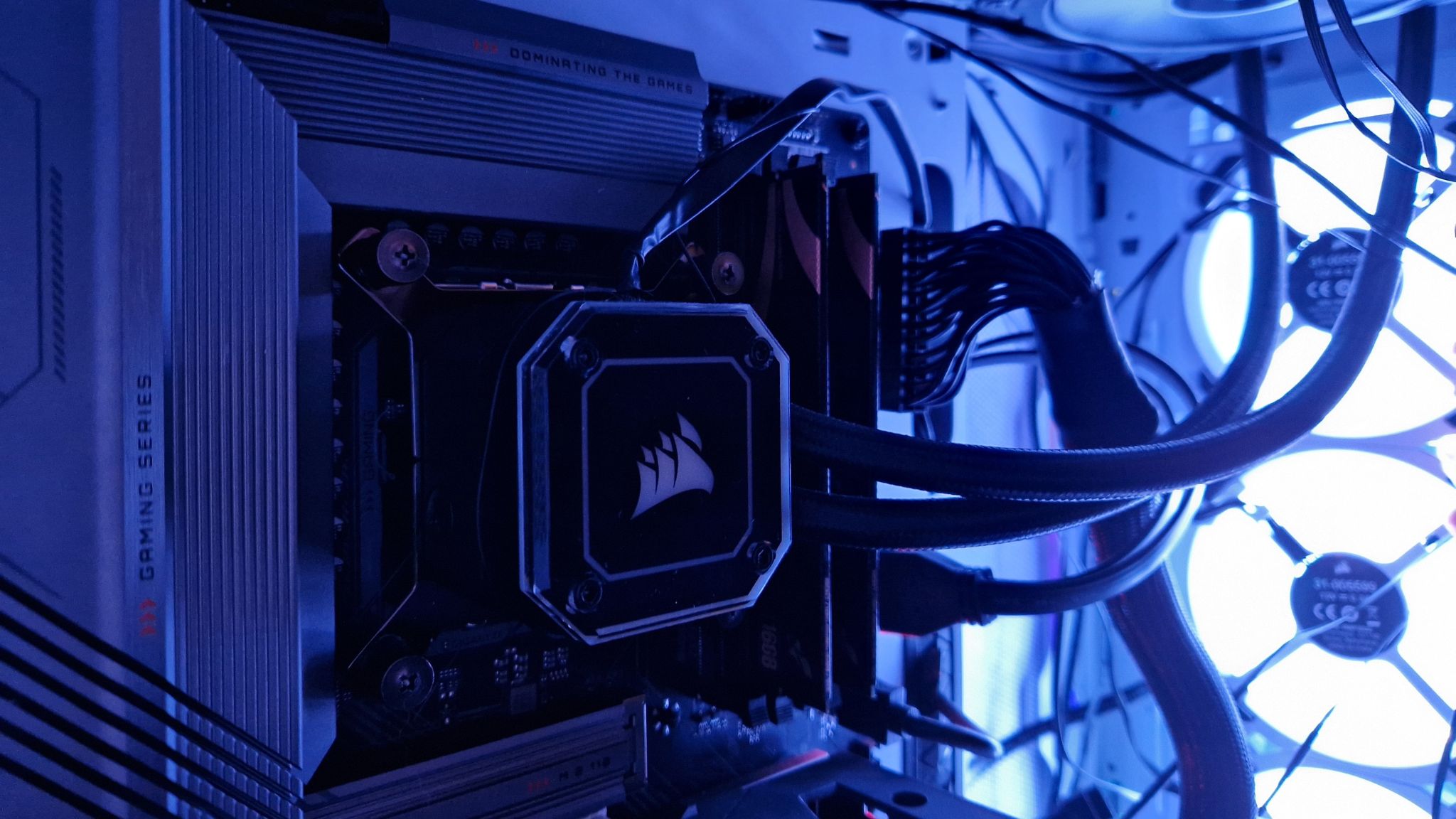
Should you buy Sabrent Rocket DDR5 RAM?
While I wasn't brave enough to push past 5000MHz, I'd definitely believe that Sabrent's Rocket DDR5 is more than capable of doing so. What you have here then, is a RAM kit that has marketed "second class" DDR5 speeds, but can definitely keep up with pricier, top-of-the-line options. The intuitive and minimalist design might not be for everyone, but this has to be one of the purest top performers on the market, especially when it comes to its overclocking capabilities.
For its price, I'd prefer it if it didn't feel quite as fragile, but the performance boost this RAM gave to our testing PC was substantial. For that reason, this is an easy recommendation from me.
How we tested the Sabrent Rocket DDR5 RAM
Sabrent's Rocket DDR5 RAM was our testing PCs short-term memory for the past two or so months. We used two 16GB sticks to give ourselves 32GB in total. I've had lots of experience with the Rocket DDR5 in that time, both in terms of general PC use and when playing games.
I focused on XMP profiles and BIOS settings, as well as CPUZ to track the RAM's possible MHz speeds. I also watched voltages when playing with these settings to ensure safety while boosting, although the RAM always seemed totally at ease when pushed. While I didn't track read and write speeds, or do any overly technical Passmark benchmarking, I preferred to test in ways that the average gamer, first-time buyer, or inexperienced PC builder would understand and appreciate.
As mentioned, I kept an eye on load times and frame rates during use. After over a month of using the RAM at its out-of-the-box speed before enabling XMP, I noticed a substantial increase in load times and fps rates in various games.
You can read more on how we test gaming tech in our full GamesRadar+ Hardware Policy.
Not quite ready for DDR5 yet? You could always put the money toward one of the best SSDs for gaming, or one of the best CPUs for gaming instead.
One of my earliest memories is playing SuperMario64 and wondering why the controller I held had three grips, but I only had two hands. Ever since I've been in love with video games and their technology. After graduating from Edinburgh Napier University with a degree in Journalism, I contributed to the Scottish Games Network and completed an Editorial Internship at Expert Reviews. Over the last decade, I’ve been managing my own YouTube channel about my love of games too. These days, I'm one of the resident hardware nerds at GamesRadar+, and I take the lead on our coverage of gaming PCs, VR, controllers, gaming chairs, and content creation gear. Now, I better stop myself here before I get talking about my favourite games like HUNT: Showdown, Dishonored, and Towerfall Ascension. Location: UK Remote
